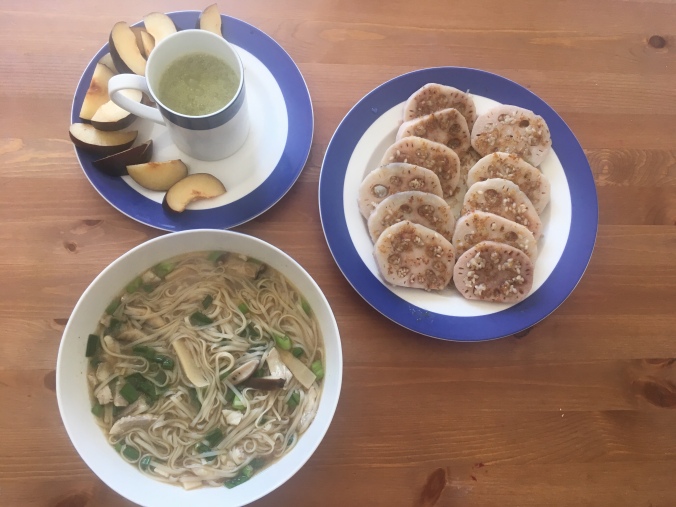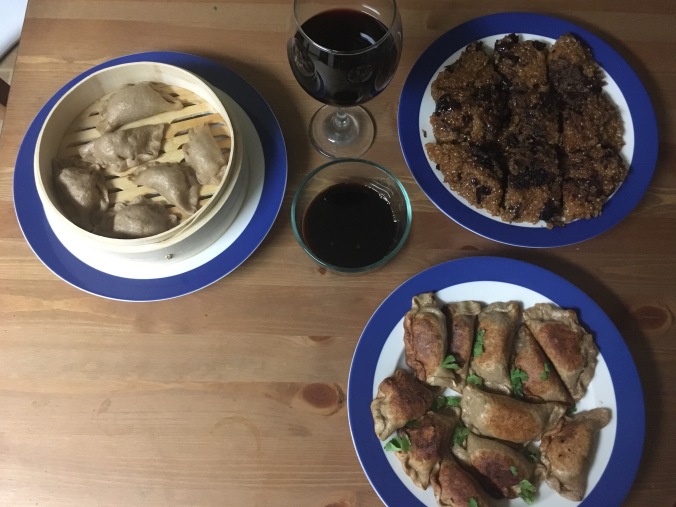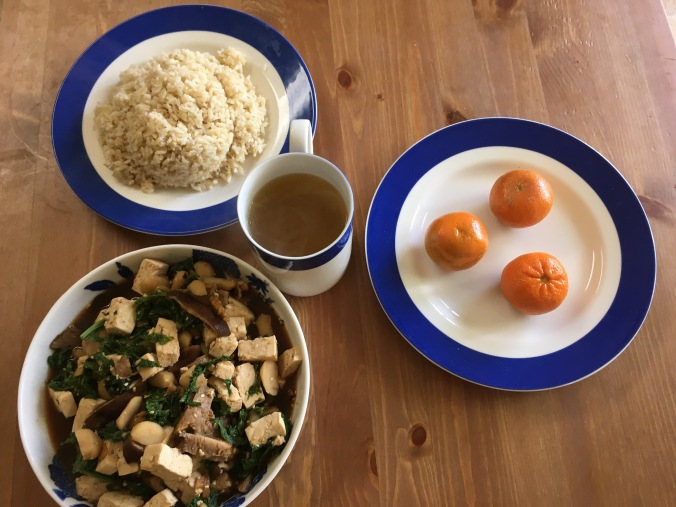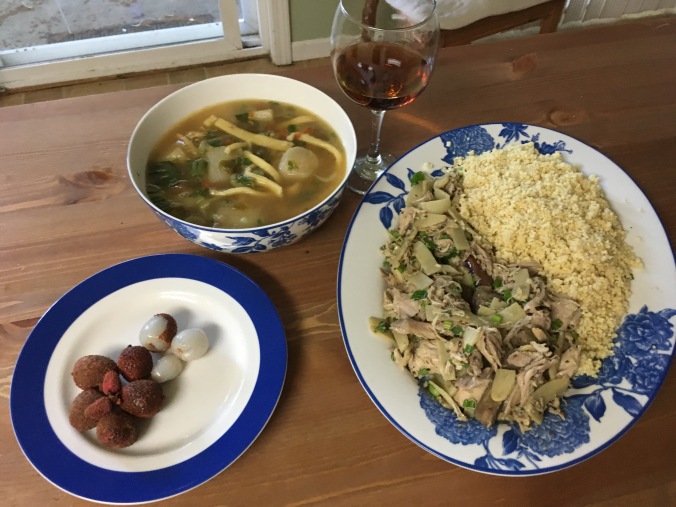After the collapse of the Tang Dynasty in 907AD, a warring period lasted in China for 50 years, concluding with the establishment of the Song Dynasty from its capital at Bianjing (modern Kaifeng). Over the next century Song China became a center of trade and prosperity, and the society flourished under a revival of Confucianism while respecting Taoist and Buddhist thought. Amidst its growth, the statesman Su Shi conducted numerous civic projects and wrote treatises and works of poetry in the southern city of Lin’an (modern Hangzhou).
In 1076 Su Shi wrote his beloved ci poem, Thinking of You at the Mid-Autumn Festival, about his brother Su Zhe, who he had not seen in years:
The poet drinks the seasonal osmanthus wine and looks to the moon, longing to fly as the hero of legend to where his brother might be, but realizes that he and his brother are simply onlookers of the same view, for the moon itself waxes and wanes like life’s ups and downs.
Over the next few years, Su Shi’s poetry attacked the rival party’s controversial policies, and soon he was accused of treason and exiled to Huangzhou, to live a quiet life of meditation at a farm he named Dong’Po. In 1082AD there, he wrote the fu poem Remembering Red Cliffs, in which he makes pilgrimages to the site of the famous 208BC battle:
The military and poetic accomplishments of earlier ages are but currents swept along in the river of life, leaving only small imprints behind, while the works of nature replenish themselves perpetually. In another visit to the site, the poet alone glimpses the hidden mystery and wisdom of ages long past, but the world and its mundane concerns take us away from ever exploring them fully.
One of Su Shi’s later students had a daughter, who lived a carefree scholarly life north of Bianjing until her marriage to the writer Zhao Mingcheng around 1101AD. These early works of Li Qingzhao dealt with the seasonal nature of flowers compared to the changing emotions of love and marriage, and also with enduring loneliness over cold nights and empty festivals while her husband served as an official in other cities for years at a time. Years later the couple were forced to flee to Nanjing, salvaging 15 carts of their collected poetry and writings, after the invading Jurchens attacked the region and took the Song capital in 1127AD. Her works then centered on the shared experience of the exiles, describing foreign flowers and seasonal shifts that were never quite right, even though the memory of their homeland had faded over time. Two years later her husband died, which deeply affected her poetry, as mourning, lonely days, crying, and depression became common themes. As the Song dynasty reformed around its new capital in Lin’an (modern Hangzhou), the poet resided there and shifted her literary theme to arguing for the government to repay the untrustworthy Jurchens for sacking Bianjing, and to preserve Song from the incompetent governance that led to the downfall of the Tang, Shang, and Xia Dynasties before it. Eventually she began to look heavenward, longing for the destiny of immortal bliss and the company of ancient sages, and depicting the quiet sunset of her life as a winding pilgrimage coming to a close, while eavesdropping on youths first experiencing the world’s delights.
Although dishes like mooncakes and Su Shi’s Dongpo Pork were probably later inventions, the true legacy of these Song Dynasty poems endured after its end a century later. Meanwhile, Hangzhou still echoes with the blending between the North & South cuisines in that era, in dishes such as fish noodle soups and osmanthus-flavored roots, local orchard apricots and plums, and the sweetened whipped powdered teas famous in that time.

SONG SAO YU GENG
A blending of Northern soups and Southern lake fish dishes, Mrs. Song’s Fish Soup became a popular dish in this time, and dried noodle shops flourished with different ways to serve noodles in soups, sauces, and stews.
- 1.5 lb chicken wings
- 1/2 lb uncut prosciutto ham chunk, trimmed of skin edge
- 1″ slice of ginger
- 1 tsp whole peppercorns
- 1 cao guo black cardamom pod
- 1/2 tsp nutmeg
- 3 tbsp soy sauce
- 2 tbsp Shaoxing wine or huangjiu
- 1 tbsp Chinkiang black vinegar
- 1/2 tbsp White pepper
- 1 lb Lake perch fillets cut into 1″ pieces (deboned)
- 8oz can of bamboo shoots in strips
- 3-4 Shiitake mushrooms, destemmed and sliced
- 8oz dried Chinese wheat noodles (vermicelli-thickness)
- 3 scallions
Take chicken wings and ham and cover with water. Bring to boil, and lower heat, simmering with ginger, black cardamom, peppercorns, white parts of scallions, and nutmeg for 1 1/2-2 hrs. Strain soup and discard solids. Add soy sauce, wine, vinegar, and white pepper, adjusting for balance. Bring to a simmer and add fish, bamboo, and mushrooms. Cook noodles separately. When fish is cooked, add noodles and serve with some chopped scallion greens to top each bowl.
SONG STUFFED LOTUS ROOT
A popular dish for the Mid-Autumn Festival, this plate is often served then before the meal, despite the sweetness of the osmanthus syrup.
- 2-4 tbsp Osmanthus syrup
- 1 lotus root, peeled but not into cavity
- 1/2 cup glutinous rice, soaked overnight
- 1 1/4 cups Raw sugar
Slice 1″ off end of lotus root to reveal the inner cavities. Slowly fill the cavities with rice, and seal the lid with toothpicks. Cover with water, add sugar to liquid, bring to boil and lower to simmer. Cook root until soft, about 30-35 minutes. Let cool briefly outside of water, slice and top with syrup.
SONG WHIPPED TEA
In the Song dynasty tea became more popular than wine, and tea culture developed into various methods of serving it, such as mixing rice flour and tea powder into dragon ball cakes, for a quick grinding and whipping up the tea into a froth.
- 1 tbsp Green tea matcha powder
- 1 tbsp raw sugar
- 1/2 tbsp sweet rice flour
- 1 1/4 cup boiling water steeped with 1/4 plum diced (or prunes if out of season)
Mix tea and rice flour in bowl. Add sugar. Slowly add water, and use a mechanical whisk (or a tea whisk made for this purpose) to briskly froth the mix. Pour in serving cup.
Extras: adzuki bean, apricot, bamboo, barley, beef, bitter melon, black vinegar, blackberry, black cardamom, bok choy, calabash, cardamom, cassia, cherry, chestnut, chicken, chive, cilantro, coriander, cress, cumin, daikon radish, dandelion, deer, Durum wheat, eggplant, eggs, fennel, fennel seed, fish, flaxseed, galangal, garlic, ginger, glutinous rice, goat, goji berry, grape, ham, hazelnut, honey, jujube, kiwi, lamb, leek, lettuce, longan, loquat, lotus, lychee, matcha, melon, milk, millet, mulberry, mung bean, mushroom, mussels, mustard green, mustard seed, nectarine, nutmeg, onion, orange, oyster, peach, pear, plantain, plum, pork, rhubarb, rice, rice wine / vinegar, salt, scallions, scallops, sesame oil, sesame seed, shallots, shellfish, shiitake, sichuan pepper, soy sauce, soybean, squid, star anise, sugar, taro, tea, tofu, turmeric, veal, walnut, Water caltrop, water chestnut, wheat, wheat gluten (seitan), white pepper, wild fowl, wine, yam


